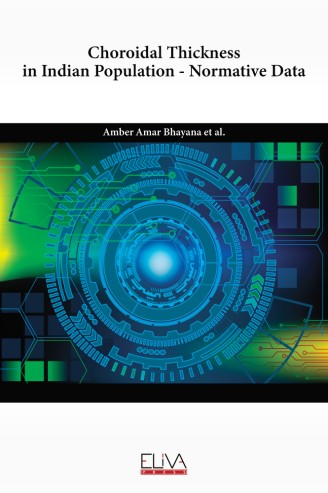
Choroidal thickness in Indian population - Normative data
$ 45.5
Description
The purpose of this study was to provide normative database for subfoveal choroidal thickness in Indian eyes. This was a cross sectional study based at a tertiary eye care center in Northern India. Two hundred and thirtyeight eyes of 119 healthy subjects were examined in terms of axial length, spherical equivalent, and choroidal thickness. Inclusion criteria included age 19–60 years, no retinal or choroidal disorder, and patients with clear media and good fixation. Patients with high hypermetropia (>4 D) or myopia (>6 D) or any systemic disease likely to affect choroidal thickness were excluded. Twelve radial line scans were obtained centered on the fovea that were used to calculate choroidal and retinal thickness in 9 early treatment diabetic retinopathy study (ETDRS) zones. The mean age of all the subjects was 28.70 ± 11.28 years; mean axial length was 23.63 ± 1.96 mm, and mean spherical equivalent was − 0.92 ± 3.08 D. The mean subfoveal choroidal thickness was 299.10 ± 131.2 μ and mean foveal thickness was 239.92 ± 48.16 μ. A negative correlation was found between subfoveal choroidal thickness and age (r = −0.0961, P = 0.1392) and axial length (r = −0.3166, P < 0.001). A statistically significant positive correlation was found between subfoveal choroidal thickness and refractive error (r = 0.2393, P = 0.0002). This study thus provides normative database for subfoveal choroidal thickness and foveal thickness using swept source optical coherence tomography. The choroidal thickness measured with swept source platform is slightly higher than that reported with spectral domain platforms.



